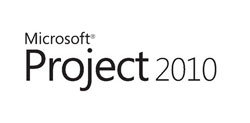REDMOND, Wash. — April 1, 2010 — For anyone with a business card that doesn’t read Project Management Professional – the vast majority of office workers, in other words – Microsoft Project is something of a mystery. Despite being a billion dollar business for Microsoft with millions of customers worldwide, Project is software that most office workers have never heard of, let alone tried.

Ludovic Hauduc, general manager of Microsoft Project.
Ludovic Hauduc, general manager of Microsoft Project, hopes that changes later this Spring, when a retooled version of the project management software ships with Microsoft Office 2010. Long a niche product aimed at project management pros, Project 2010 aims to broaden its usage and appeal. After all, project managers aren’t just the ones with the PMP designation after their name, Hauduc says.
“If you have a fulltime job, and you use a computer to do your job, you probably manage projects,” he says. “There was no reason why our Project team couldn’t deliver some value to these information workers.”
Since 1990, when it became the company’s third Windows-based application, Microsoft Project has helped project managers develop plans, manage budgets, assign resources to tasks, and track project progress. Project 2010’s new features, such as an interface that will be familiar to any Microsoft Office user, aim to bring a wider audience to the software, Hauduc says.
The updates continue an evolution that has been underway for years.
“We’ve really moved the needle from being a small, dedicated niche product for a pretty narrow slice of the information worker ecosystem to being a pretty ubiquitous tool of managing work in the enterprise,” Hauduc says. Today, Project boasts more than 20 million users worldwide. Still, that’s only a small percentage of Microsoft Office users– roughly eight out of 100 people who run Office use Project, he says.
For the 2010 edition, Hauduc and the Project team set out to revamp the product to appeal to a larger audience. One primary way was by listening to their current customers. One of the top pieces of feedback – please make it like Excel. Project 2007 didn’t present an intuitive UI to the first-time user, Hauduc says. The 2010 edition has adopted many of the Office 2010 UI elements, such as the ribbon.

Microsoft aims for Microsoft Project 2010 to broaden the product’s appeal beyond people with “project management” in their job titles.
“It’s more than just making the Excel user feel at home,” Hauduc says, adding that Project doesn’t expect to siphon users away from Excel. Rather, the goal is to entice people who wouldn’t consider using Project. “We’re lowering the barrier of entry, hopefully putting it in the hands of people who wouldn’t even consider themselves project managers.”
Other new features in Project 2010 include a visually enhanced Timeline view, which helps users quickly and easily stay on top of major milestones. The new view offers a much richer and simpler way to track dates than the complex charts that used to be typical of high-level project planning, Hauduc says. Project users also will be able to copy and paste a timeline into any Office document to quickly communicate with everyone involved on a project.
As the team worked on tweaking Project 2010, they got a lot of feedback from Microsoft’s Human Resources department. In April 2007, the department started using Project Portfolio Server 2007 to help plan, prioritize, and track its projects. Soon after, the department was invited to become an early adopter of Project Server 2010.
In addition to making it easier to manage specific projects, Project helped Microsoft Human Resources take the politics out of decisions and focus on aligning projects with the company’s strategic goals. “Deploying Project let us figure out how to maximize portfolio investments given a limited amount of resources,” says Bruno Lecoq, director of Business Process for the HR Operations Excellence group.
By November 2009, the HR department had 400 users on a beta version of Project Server 2010, eventually scaling up to 2,000 users by the end of December. The improvements in the new release have helped leadership make better decisions and pare the HR portfolio from 200 to 25 projects, Lecoq says. The result is higher-quality projects and smoother scheduling, with improvements in transparency, accountability, and collaboration, he adds.
Hauduc refers to Project 2010 as “one of those milestone versions we release once a decade.” He should know; Hauduc has been involved with the Project team since 1993, when he started at Microsoft as an intern. He’s already thinking about the next version of Project, with plans of going even broader and getting half of Office users to work with Project.
In the meantime, he hopes Project 2010 convinces people who have been intimidated by the software to give it a try.




